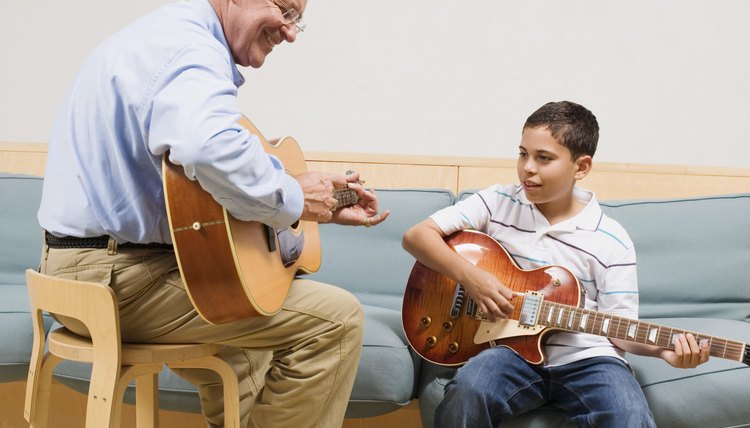Activities to Improve Dexterity

Dexterity refers to the level of skill and grace you have in performing specific motor tasks, especially those involving the use of your hands. Improving your dexterity can help you maintain independence as you age, develop an increased ability to perform manual skills involving your hands, and artistic activities, such as painting or playing the piano, with greater ease.
Manual Dexterity
Manual dexterity involves the development of hand-eye coordination and very fine motor control. Imagine the level of care and precision required in certain activities, hobbies and professions that involve small, meticulous actions with your hands, such as sewing, painting and playing a musical instrument. Many people in certain professions, including dentists, physicians, gardeners and musicians, require and rely on manual dexterity to perform their jobs flawlessly and consistently.
Activities for Manual Dexterity
You can improve your manual dexterity by performing activities that require repetition, focus, hand-eye coordination and a steady hand. Activities such as learning to play and practicing a musical instrument, painting or sewing, hobbies such as making miniature models, writing with your non-dominant hand or even psychomotor skills like typing can help you develop manual dexterity. Occupational therapy programs can also increase manual dexterity, especially in those who have lost function in their hands due to disease, injury or trauma,
Physical Dexterity
Physical dexterity -- also referred to as body dexterity -- is the ability to perform specific activities with agile, controlled and purposeful physical movements. Physical dexterity relies on both gross and fine motor skills. You develop physical dexterity early in life, as you learn to crawl, stand and walk. Maintaining and improving physical dexterity is particularly important as you get older, as a decline in muscle strength, speed and dexterity is a common consequence of aging. Reduced physical dexterity can lead to increased falls and injuries, a loss of balance and problems with walking and other activities.
Activities for Physical Dexterity
Activities used to promote physical dexterity vary depending on your age and physical condition. Performing activities that involve a combination of fine and gross motor skills, such as sports that involve hand-eye coordination and the use of your large muscle groups, like basketball or baseball, can help develop physical dexterity. Social activities might also be associated with maintaining physical dexterity, according to a study published in the 2009 issue of "Archives of Internal Medicine." Researchers in this study found that a lack of social contact is associated with a rapid rate of motor function decline as people age. Social activities that can help you improve or maintain physical dexterity include playing bingo, doing volunteer work, going to church or attending a sporting event.
References
Writer Bio
Ashley Miller is a licensed social worker, psychotherapist, certified Reiki practitioner, yoga enthusiast and aromatherapist. She has also worked as an employee assistance program counselor and a substance-abuse professional. Miller holds a Master of Social Work and has extensive training in mental health diagnosis, as well as child and adolescent psychotherapy. She also has a bachelor's degree in music.
